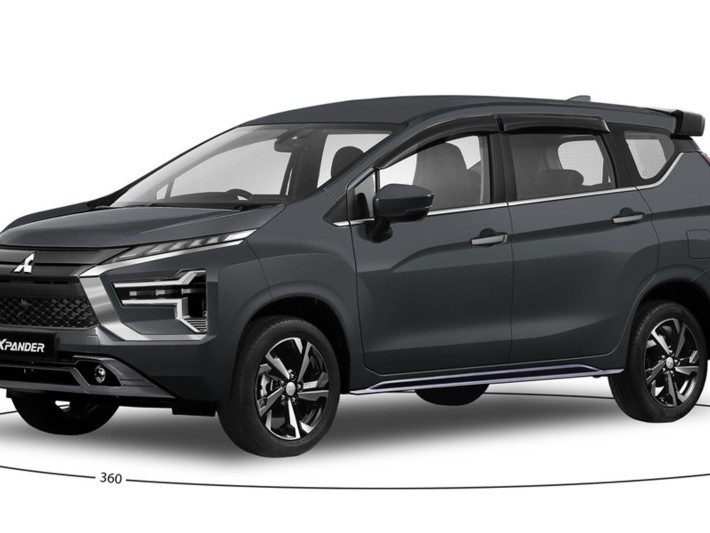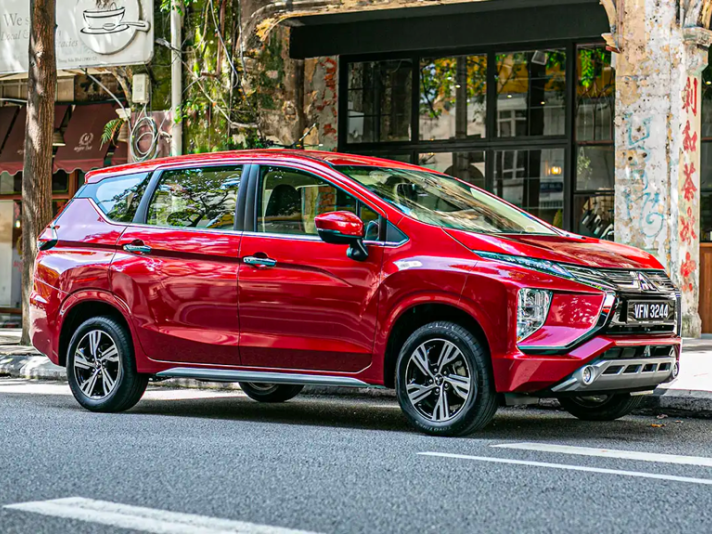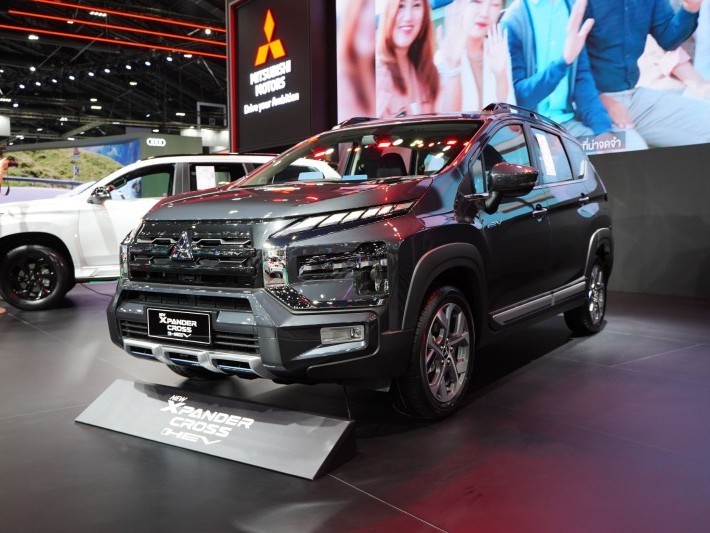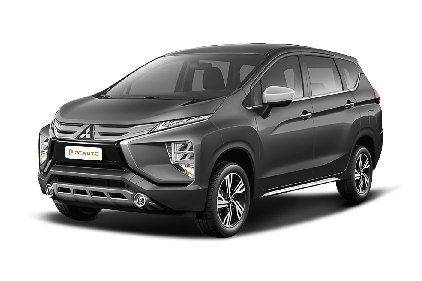Q
What is the Fuel Consumption of Mitsubishi Xpander?
As a popular 7-seater MPV, the Mitsubishi Xpander has a moderate fuel economy performance in the Malaysian market. According to official data, its combined fuel consumption is approximately 6.5 to 7.2 liters per 100 kilometers. The specific figures may vary depending on driving habits, road conditions, and vehicle configuration. The automatic - transmission models may consume a bit more fuel during city driving, while they are more fuel - efficient during highway cruising.
The Xpander is equipped with a 1.5 - liter MIVEC naturally - aspirated engine, paired with a 4 - speed automatic or 5 - speed manual transmission. It delivers smooth power and is suitable for family use. Although its fuel consumption performance is not as good as that of hybrid models, it is still competitive among MPVs in the same class.
For consumers who focus on fuel economy, it is recommended to regularly maintain proper tire pressure, avoid rapid acceleration and sudden braking. These habits can effectively reduce fuel consumption. In addition, using the air - conditioner in Malaysia's hot climate also affects fuel consumption. You can moderately raise the temperature setting to reduce the engine load.
If you're looking for more fuel - efficient options, you can pay attention to the mild - hybrid technology models launched by Mitsubishi or other brands. However, with its spacious practicality and reliability, the Xpander remains a practical choice for family cars.
Special Disclaimer: This content is published by users and does not represent the views or position of PCauto.
Related Q&A
Q
What is the ground clearance of the Xpander 2020?
The 2020 Mitsubishi Xpander has a ground clearance of 205mm, a design that makes it perform exceptionally well on Malaysia's diverse road conditions, handling both city driving and occasional country roads with ease. The higher ground clearance not only improves the vehicle's off-road capability but also effectively prevents the undercarriage from scraping on rough roads, making it particularly suitable for water accumulation section that may appear during Malaysia's rainy season. Ground clearance is one of the key indicators for measuring the practicality of SUVs and MPVs; models typically ranging between 180mm and 220mm can balance comfort and off-road performance. As a 7-seater MPV, the Xpander maintains a spacious interior while also focusing on optimizing the chassis height, giving it a competitive edge among models in its class. For Malaysian consumers, choosing a model with appropriate ground clearance is especially important, as it directly relates to the convenience and safety of daily driving, especially when dealing with areas with poor road conditions.
Q
What is the fuel consumption of the Mitsubishi Xpander Cross 2020?
According to official figures, the 2020 Mitsubishi Xpander Cross has a combined fuel consumption of approximately 6.5 to 6.9 liters per 100 kilometers, though the actual numbers can vary depending on driving habits, road conditions, and vehicle load. It’s powered by a 1.5-liter MIVEC naturally aspirated engine paired with a 4-speed automatic transmission, delivering smooth power and decent fuel efficiency—perfect for Malaysian family daily use. For owners looking to cut fuel costs further, regular vehicle maintenance, keeping tire pressure at the recommended level, and avoiding aggressive driving like sudden acceleration or hard braking can all help boost fuel efficiency. Plus, as a crossover MPV, the Xpander Cross doesn’t just shine in fuel economy; it also offers generous interior space and a higher ground clearance, making it ideal for Malaysia’s varied road conditions. Whether you’re commuting in the city or heading out for a weekend getaway, it handles it all with ease.
Q
How many seats are in the Mitsubishi Xpander 2020?
The 2020 Mitsubishi Xpander is a popular 7-seater MPV in the Malaysian market, featuring a 2+3+2 seating layout that can accommodate 7 passengers. The second-row seats fold down in a 60:40 split, while the third-row seats fold 50:50, offering flexible space configurations to meet different cargo needs. Under the hood, it's powered by a 1.5-liter MIVEC naturally aspirated engine, delivering 105 horsepower and 141 Nm of peak torque, paired with a 4-speed automatic transmission. It focuses on practicality and fuel efficiency, making it a great fit for family users. The Xpander also comes with basic features like a multifunction steering wheel and a touchscreen infotainment system. Its higher ground clearance (205mm) helps tackle some of Malaysia's rougher road conditions. Notably, the Xpander positions itself between compact MPVs and mid-size SUVs in the Southeast Asian market, competing with models like the Toyota Avanza and Honda BR-V. However, its unique exterior design and Mitsubishi's reputation for durability make it a top choice for many consumers.
Q
What size engine is in the Mitsubishi Xpander 2020?
The 2020 Mitsubishi Xpander is powered by a 1.5-liter MIVEC naturally aspirated petrol engine, model 4A91. This four-cylinder unit churns out 105 horsepower (77 kilowatts) and a peak torque of 141 Nm, paired with either a 5-speed manual or 4-speed automatic transmission. Its performance is ideal for daily family use, striking a good balance between fuel efficiency and reliability. This engine is widely used across multiple Mitsubishi models, boasting mature technology and low maintenance costs, making it well-suited for Malaysia's road conditions and climate. As a 7-seater MPV, the Xpander's engine is tuned to deliver strong low-end torque, perfect for city driving and carrying loads, aligning with the Southeast Asian market's preference for durability and practicality. It's worth noting that while naturally aspirated engines aren't as powerful as turbocharged ones, their simpler structure, easier maintenance, and lower long-term running costs are part of why the Xpander remains popular in Malaysia.
Q
Is Xpander 2024 3 cylinder?
Based on the current information, the 2024 Mitsubishi Xpander available in the Malaysian market is equipped with a 1.5 - liter MIVEC four - cylinder naturally aspirated engine, not a three - cylinder configuration. This engine delivers 105 horsepower and 141 Nm of torque, paired with either a 5 - speed manual or a 4 - speed automatic transmission. It focuses on providing smoothness and fuel efficiency for the family car market.
The doubts about a three - cylinder engine might stem from the fact that some brands have adopted three - cylinder technology in recent years for emission reduction purposes. However, the Xpander maintains a four - cylinder layout to ensure power stability. It's worth noting that although three - cylinder engines are smaller in size and more fuel - efficient, they usually require more advanced technical tuning for vibration suppression and high - speed performance. In contrast, the four - cylinder structure still has advantages in terms of durability and smoothness.
Malaysian consumers can make their choices according to their own needs when purchasing. If they prioritize low fuel consumption and are open to new technologies, they can look into three - cylinder models from other brands. If they prefer a more mature powertrain, the four - cylinder configuration of the Xpander remains a reliable option. It is recommended to take test drives to experience the differences.
Q
What is the ground clearance of the Xpander 2024?
The 2024 Mitsubishi Xpander has a ground clearance of 205 millimeters. This figure is relatively high among compact MPVs and allows the vehicle to adapt well to Malaysia's diverse road conditions, including urban roads and the rough terrains in the suburbs. The high ground clearance not only improves the vehicle's passability but also reduces the risk of chassis scratches, especially on flooded roads that may occur during the rainy season in Malaysia.
In addition to the ground clearance, the 2024 Xpander is also equipped with an optimized suspension system, which further enhances driving stability and comfort. For Malaysian consumers, this type of high - chassis MPV is very practical. It can meet the needs of family outings and handle complex road conditions.
If you often need to carry passengers or cargo and also pay attention to the vehicle's passability, the 2024 Xpander would be a great choice. Its space performance and practicality are also worth noting.
Q
Is the 2024 Mitsubishi Xpander a MPV or SUV?
The 2024 Mitsubishi Xpander falls into the MPV (Multi-Purpose Vehicle) category rather than the SUV (Sport Utility Vehicle) category. Its original design aim was to meet the needs of family users for spacious interiors and comfortable riding experiences. It features a three - row seat layout and sliding side doors, which are typical characteristics of MPVs. The Xpander has a relatively high ground clearance and crossover - style exterior kits, making it look somewhat like an SUV. However, in essence, it remains an MPV focused on practicality and versatility.
For consumers in Malaysia, the Xpander is an excellent family vehicle. It offers good comfort and convenience, whether for city driving or long - distance trips. The main differences between MPVs and SUVs lie in their body structures and uses. MPVs prioritize passenger space and cargo - loading flexibility, while SUVs emphasize off - road performance and driving visibility. Consumers can choose the appropriate model based on their actual needs.
The Xpander has always been very popular in the Malaysian market because it combines practicality, economy, and reliability, making it a great fit for local road conditions and family - use scenarios.
Q
What is the fuel consumption of the 2024 Mitsubishi Xpander?
The 2024 Mitsubishi Xpander offers a moderate fuel economy. According to official data, its combined fuel consumption is approximately 6.5 to 7.2 liters per 100 kilometers. The exact figure may vary slightly depending on driving habits, road conditions, and vehicle configurations (such as the 2WD or 4WD versions). This model is equipped with a 1.5-liter MIVEC naturally aspirated engine, paired with a 4-speed automatic or 5-speed manual transmission. The power is tuned to meet the practical needs of families.
For Malaysian users, the Xpander's fuel consumption is suitable for daily city commuting and medium - to short - distance trips, especially considering the common traffic congestion in the local area. It is recommended to perform regular maintenance (such as replacing the air filter and spark plugs) to optimize fuel efficiency. In addition, if you want to further reduce fuel consumption, you can try some fuel - saving driving techniques like smooth acceleration and reducing idling time.
Similar models in the same class, such as the Toyota Avanza or Honda BR - V, have a comparable fuel economy. However, the Xpander has an edge in terms of space flexibility and cost - effectiveness, making it a great choice for family users who value practicality.
Q
How to open the hood of Xpander 2024?
To open the hood of the 2024 Mitsubishi Xpander, first, sit in the driver's seat. Locate a handle with a hood icon near the driver's side foot area. Usually, it's located at the lower - left of the steering wheel or on the side of the dashboard. Pull this handle firmly, and you'll hear the sound of the first hood lock releasing. Then, walk to the front of the vehicle, reach your hand into the gap in the center of the front edge of the hood, and you can feel a lever for the secondary safety lock. Push the lever to the right and gently lift the hood to fully open it. It's recommended to ensure the vehicle is turned off and parked on a flat surface during the operation for safety.
It's worth noting that the hood opening methods of Xpander models from different years may vary slightly. The 2024 model uses a double - lock mechanism to prevent the hood from popping open accidentally while driving, which is also the standard safety design for most new cars nowadays. If you have difficulty opening the hood, don't force it. Check if both locks are fully released. Regularly applying lubricant to the lock parts can also keep the mechanism running smoothly. Understanding these details can help car owners better perform basic maintenance tasks such as checking the engine oil and coolant in daily life.
Q
What is the safety rating of the Mitsubishi Xpander 2024?
As of 2024, the safety rating of the Mitsubishi Xpander has not been officially announced by ASEAN NCAP or other major global evaluation institutions (such as Euro NCAP). However, referring to the performance of the 2023 model, the vehicle received a 4-star rating in the ASEAN NCAP test, mainly thanks to its standard basic safety features like dual airbags, ABS anti-lock braking system, and Electronic Stability Control (ESC). For Malaysian consumers, the practicality of the Xpander, such as its 7-seater layout and high ground clearance, is quite popular among family users. However, if you have higher requirements for safety performance, you can pay attention to models in the same class, such as the Toyota Veloz or the Honda BR-V, both of which promote themselves with a 5-star safety rating. It's worth noting that while safety ratings are important, actual driving safety depends more on driving habits and regular maintenance. It is recommended to test-drive the vehicle before purchasing to experience its dynamic performance and to check the convenience of the after-sales service network. Mitsubishi has a relatively well - established dealer system in Malaysia, which provides a guarantee for subsequent maintenance.
Latest Q&A
Q
How many Litres per 100km does a Toyota Yaris take?
According to official Toyota data, the fuel consumption of the Toyota Yaris varies by model and powertrain configuration. The 1.5L petrol version currently sold in Malaysia has a combined fuel consumption of approximately 5.2 to 5.5 liters per 100 kilometers. The actual figure can vary depending on driving habits, road conditions, and vehicle maintenance. When driving in urban areas, fuel consumption may rise to around 6.0 liters per 100 kilometers, while on highway cruises, it can drop to 4.8 liters per 100 kilometers. For Malaysian consumers, the Yaris, as an economical hatchback, offers quite competitive fuel efficiency, making it especially suitable for city commuting. Additionally, Toyota's Dual VVT-i technology effectively optimizes fuel efficiency. It is recommended to perform regular maintenance such as replacing the air filter and using the recommended engine oil to maintain optimal fuel consumption. Furthermore, keeping proper tire pressure and avoiding sudden acceleration can further improve fuel economy.
Q
What is the Yaris comparable to?
In the Malaysian market, the Toyota Yaris is primarily positioned as a B-segment hatchback, with direct competitors including the Honda Jazz, Mazda 2, and Nissan Almera. These models also highlight affordability, nimble handling, and urban commuting convenience as their key selling points. Thanks to Toyota's reputation for reliability and low maintenance costs, the Yaris holds strong resale value in the local used car market, making it especially suitable for budget-conscious young buyers who value brand credibility. Notably, since the launch of the 2023 Yaris Cross in Southeast Asia, its crossover variant has also attracted some buyers who were originally considering the HR-V or Raize. This model derivative strategy demonstrates Toyota's precise grasp of niche markets. Technically, while the 1.5L Dual VVT-i engine in the Yaris doesn't stand out in terms of power figures, when paired with a CVT transmission, it achieves fuel efficiency of over 18km/L—an especially crucial feature given Malaysia's persistently high fuel prices. Potential buyers are advised to test drive the Perodua Myvi, a same class model. Although positioned under a different brand, both offer unique strengths in space utilization and local adaptation. The final choice should ultimately depend on personal brand preference and actual usage scenarios.
Q
Is the 2021 Yaris easy to park?
The 2021 Toyota Yaris is a great little city car for Malaysia. Its compact size and nimble handling make parking a breeze – under 4 meters long with a tight turning radius, it slides into parallel spots or reverse parks easily, even in cramped parking lots or along narrow roads. Plus, some trims come with a reverse camera and parking assist, which really boost convenience and safety when squeezing into spaces. In Malaysia's typical congested city environments like KL or Penang, the Yaris's small footprint definitely takes the stress out of driving. And let's not forget, small cars usually nail fuel efficiency – a big plus for Malaysian drivers stuck in constant traffic. If you're zipping around the city a lot, a small car like the Yaris just makes more sense than a bigger vehicle. Of course, parking skills and knowing your car's dimensions matter too – new owners should practice a bit to get the most out of the Yaris's handy size.
Q
What is the mileage limit for a Toyota Yaris?
The Toyota Yaris, known as a practical and economical car, its mileage limit mainly depends on the vehicle's maintenance condition and usage environment. Generally speaking, a properly maintained Yaris can easily clock over 200,000 kilometers or even more. The actual lifespan in terms of mileage is also closely tied to driving habits, road conditions, and regular upkeep. In Malaysia, with its hot and rainy climate, it's advisable for owners to check the engine oil, cooling system, and tires more frequently to ensure the vehicle runs steadily for the long haul. Besides, the Yaris's engine and transmission are built to be pretty durable, but regularly replacing wear-and-tear parts like the timing belt and spark plugs can significantly extend its service life. For consumers planning to buy a used Yaris, it's recommended to confirm the vehicle's actual mileage and mechanical condition through professional inspection to avoid issues caused by improper maintenance from previous owners. Overall, as long as you pay attention to maintenance, the Yaris can maintain reliable performance even in Malaysia's hot and humid environment.
Q
Is the 2021 Yaris reliable?
The 2021 Toyota Yaris has delivered an overall solid reliability performance in the Malaysian market. Under the hood, it’s packing a 1.5L Dual VVT-i engine that serves up smooth power delivery and excellent fuel efficiency—perfect for both the daily city grind and longer highway drives around here. Toyota’s TNGA-B platform really shines here, boosting body rigidity and nailing the suspension tuning, which makes for some pretty impressive handling stability.
From what owners are saying, day-to-day maintenance costs are reasonable, and Toyota’s 5-year unlimited mileage warranty takes a lot of the long-term ownership worry out of the equation. Most issues reported are minor, occasional glitches with the electronics, while major mechanical bits like the transmission and engine have shown low failure rates.
One thing that stands out is its above-average used car resale value in its class—definitely a big plus for Malaysian buyers who care about that. If you’re looking at a used 2021 Yaris, make sure to check the brake system and battery condition closely; those tend to wear faster in our tropical climate. And when it comes to regular servicing, keeping an eye on the cooling system and AC filter will help it hold up better in the local heat and humidity.
All in all, this car hits the spot for Malaysian drivers who want something economical, practical, and backed by a strong brand after-sales network.
View MoreRelated News

Mitsubishi Xpander On-Road Price: The Complete Pre-Purchase Guide
JamesApr 9, 2025

Mitsubishi Xpander Redesign: 4AT+1.5L Power Dated, Only 2 Safety Airbags!
JohnSep 24, 2024

Mitsubishi Xpander: Priced at RM 100,980, a perfect combination of comfort, spaciousness and fashion
LienMay 30, 2024

Bangkok Motor Show: MITSUBISHI XPANDER CROSS priced at 946,000 Thai Baht
Kevin WongMar 26, 2024

Mitsubishi brings Xpander and Xpander Cross HEV models to 2024 Bangkok International Motor Show
AshleyMar 18, 2024
View More

















Pros
Cons